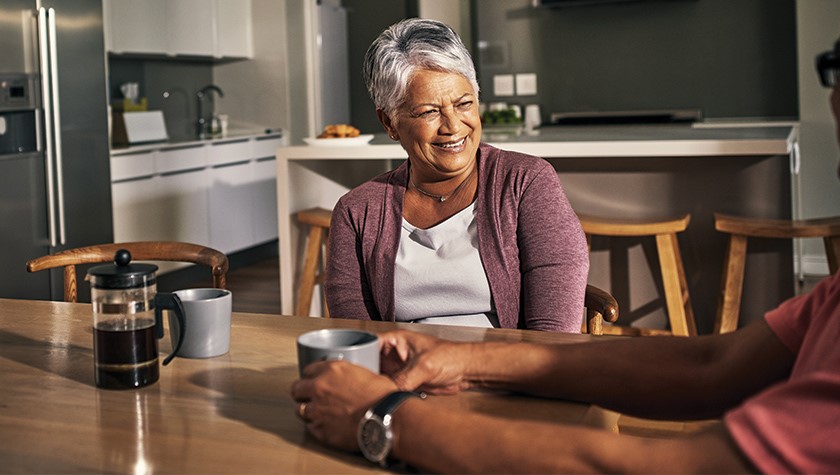
As you know, nurses play a vital role in helping to ensure the safety of your older patients at home, whether you’re:
- a hospital nurse playing an important role in preparing patients for discharge.
- a community nurse providing essential ongoing support and facilitating access to additional services when required; or
- a nurse in primary practice, checking your clients have appropriate care plans in place to support their safety and independence at home.
Challenges in ensuring safety at home
Home safety can be particularly challenging if a senior patient has been recently discharged from hospital.
Unnecessary delays in discharging patients from hospital to home is an ongoing problem and for older people this can lead to worse health outcomes, which can increase their long-term care needs3. As noted in a UK report4, a successful transition from hospital to home hinges on meticulous planning and collaboration. While the hospital environment offers constant monitoring and care, returning home presents unique challenges. Pre-discharge assessments that look into the patient’s home environment, identifying fall risks, medication management concerns and access to support systems, are all crucial. However, limited community care resources may hinder thorough assessments and comprehensive follow-ups.
‘Hospital discharge is a complex and challenging process for healthcare professionals, patients and their carers.’4
Managing the expectations of patients and their families can also play a significant role. The desire for a swift return to normality can sometimes overshadow the realities of recovery. Educating senior patients and families about realistic timelines, potential setbacks, and the importance of adherence to medication and therapy regimes are critical.
Additionally, connecting patients with available community resources for social support, meal delivery, or transportation can help bridge gaps.
The transition from hospital to home can be a vulnerable time for seniors. With difficulty sometimes accessing community care services, nurses may struggle to find enough support. Families might also have unrealistic expectations of what a loved one can manage independently. And once home, patients may have less access to medical help if an emergency arises.
A useful strategy to address these transitions is to recommend a St John Medical Alarm to your older patients.
The simplicity and effectiveness of a St John Medical Alarm can enhance the response time during a medical event, and can offer seniors living at home an improved sense of independence, whilst providing increased peace of mind for their families.
A St John Medical Alarm gives patients 24/7 access to expert care with the simple push of a button, providing them with the help and support they need should a medical event arise. For those living alone, a medical alarm provides confidence they can get help whenever needed.
Knowing an emergency medical response is available around the clock provides patients with support and protection, that may be required as part of a plan for them to be safely discharged home.
For nurses involved in developing comprehensive discharge plans, medical alarms tackle several challenges at once. A medical alarm grants patients greater independence and dignity in their own homes. An alarm can help to alleviate family worries about loved ones being alone. And it can provide access to expert care between doctor visits and home care support. All of which can help provide patients with the confidence to remain independent in their own home.
A St John Medical Alarm is the only medical alarm that connects directly to Hato Hone St John. All patients are eligible for a free trial, and all it takes is for you to make a simple referral on their behalf, through your practice management system via Healthlink or ERMS, or online via stjohnalarms.org.nz/hcp
References
- van Leeuwen, K. M., van Loon, M.S ., van Nes, F. A., Bosmans, J. E., de Vet, H. C., Ket, J. C., Widdershoven, G. A., & Ostelo, R. What does quality of life mean to older adults? A thematic synthesis. PLoS One, 14(3), e0213263.
- Davey, J. (2006). “Aging in Place”: The views of older homeowners on maintenance, renovation and adaptation. Social Policy Journal of New Zealand, 27, 128-41.
- Pellett, C. (2016). Discharge planning: Best practice in transitions of care. British Journal of Community Nursing, 21(11), 542-548. .
- The Queen’s Nursing Institute. (2015). Discharge planning: Best practice in transitions of care.
This advertising content was paid for by Hato Hone St John. Hosted content may not represent the views of Kaitiaki Nursing New Zealand or the New Zealand Nurses Organisation.



